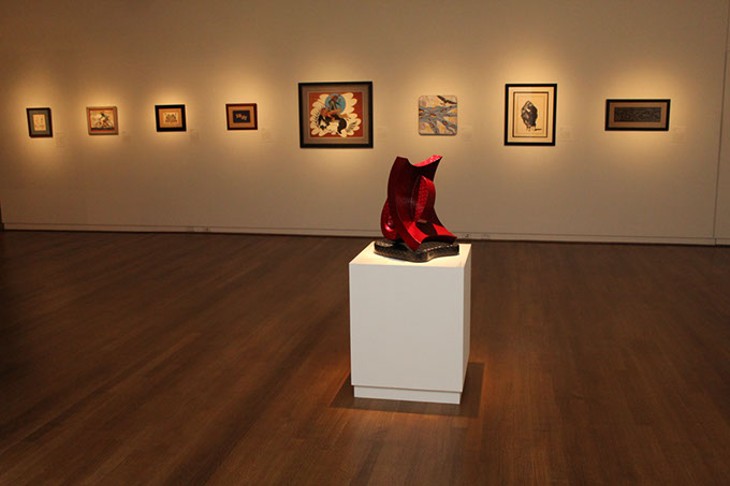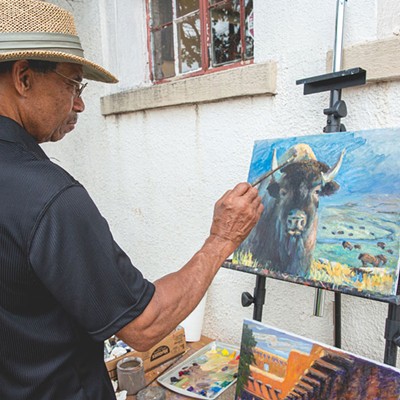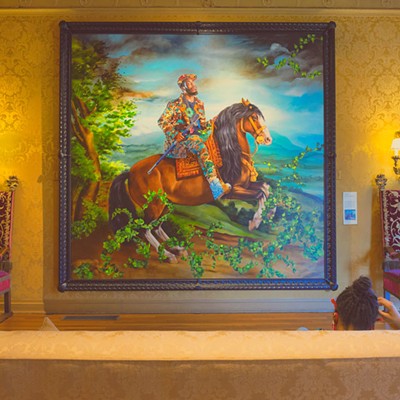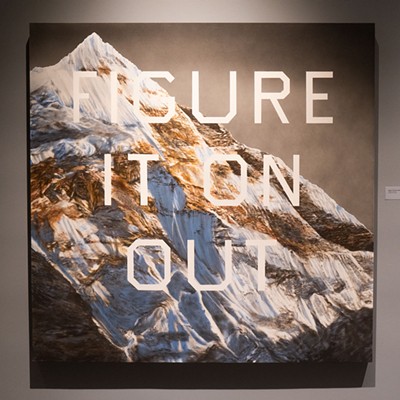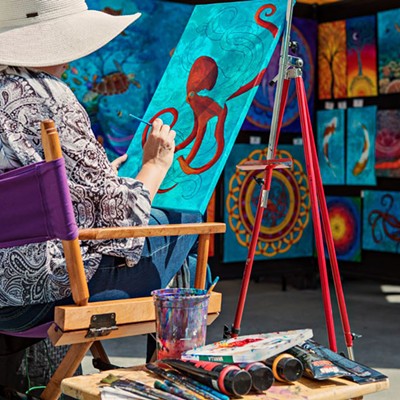For Heather Ahtone, the story of contemporary Native art is a story about the future.
Arizona attorney James T. Bialac donated his massive collection of Native American art to the University of Oklahoma’s Fred Jones Jr. Museum of Art (FJJMA) in 2010.
The numbers behind his collection are staggering: 4,100 objects representing 128 tribes, with about 300 new works gifted to the museum each year. It is one of the largest privately held collections of contemporary Native American art on the continent, and it’s still growing.
Ahtone, the James T. Bialac associate curator of Native American and non-Western art at FJJMA, sees the museum’s latest Bialac collection acquisitions as an opportunity to show visitors that the future is now.
“This places the Fred Jones Jr. Museum of Art in a small number of institutions who can speak to the vitality of Native American culture as it is today, not a century ago,” Ahtone said. “It helps us show the dynamic relationships that exist between Native people, their politics, their identity, their beliefs, their humor and their vision for what is to come.”
Among the pieces included in James T. Bialac Native American Art Collection: Recent Acquisitions are rare works by major artists like George Morrison and Robby McMurtry and more contemporary works from America Meredith and Craig George. The exhibit runs through June at FJJMA, 555 Elm Ave., in Norman.
Native voices
Visitors will find rich figurative depictions of tribal ceremonies and traditions and abstract works from artists such as Phyllis Fife Patrick, who references traditional Muscogee (Creek) and Seminole patchwork patterns through layers and patterns of geometric shapes.Bialac’s collection spans media and tribes, focusing primarily on works produced by indigenous peoples of the American Southwest. Recent Acquisitions also includes far-flung artists like Canadian Inuit Victoria Mamnguksualuk, whose striking graphite and crayon drawing “Kiviuq and the Bear Stories” holds the distinction of being one of the most arresting pieces in the show.
“Combined with the Eugene B. Adkins Collection and the FJJMA’s other holdings, we can share a story of the history of Native art and the future,” Ahtone said. “Jim Bialac understands that continuing to collect is an active engagement for which he is uniquely positioned to support continued creative and artistic expression, and to answer the question, What does the future hold for native people?”
This question animates works like Meredith’s “Current” and George’s “Midnight Yeii Rider,” which scramble the iconography of a tribal past with markers of the decidedly urban and global present.
“Current” foregrounds this collision most dramatically with its dreamlike blending of collaged street grids and a riverine nature scene splashed against an appropriated traffic sign.
“Midnight Yeii Rider” showcases the artist’s flair for street and graffiti art.
Living history
“A century ago, many institutions were compiling vaults full of materials to document the vanishing Indians,” Ahtone said. “But they didn’t vanish.”Many non-Native people place the indigenous tribes of North America in the past, sweeping a complex network of distinct cultures into the dustbin of history.
This makes way for a narrative of American identity in which the descendants of colonizers can position Native people as a tragic footnote in their story.
Native Americans, in this scenario, are many things: magical and mythical, the stuff of legends. But they’re never neighbors, lovers or friends.
This misconception is part of what the new Bialac exhibit attempts to correct.
While signage throughout the exhibit sometimes gives visitors a richer account of Bialac’s collecting habits than details surrounding the work of the artists he so admires, the collection performs an enormously valuable service by highlighting the contributions of artists whose stories are so often pushed to the periphery of American life.
These artists speak, and Ahtone hopes their voices will resonate as they continue to create space for themselves in a system that seems designed for their exclusion.
Print headline: Future history, Fred Jones Jr. Museum of Art showcases its growing Native American collection with recent James T. Bialac acquisitions.

